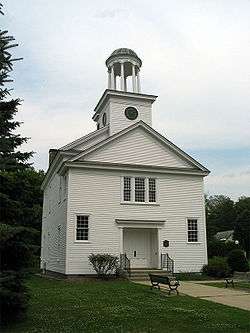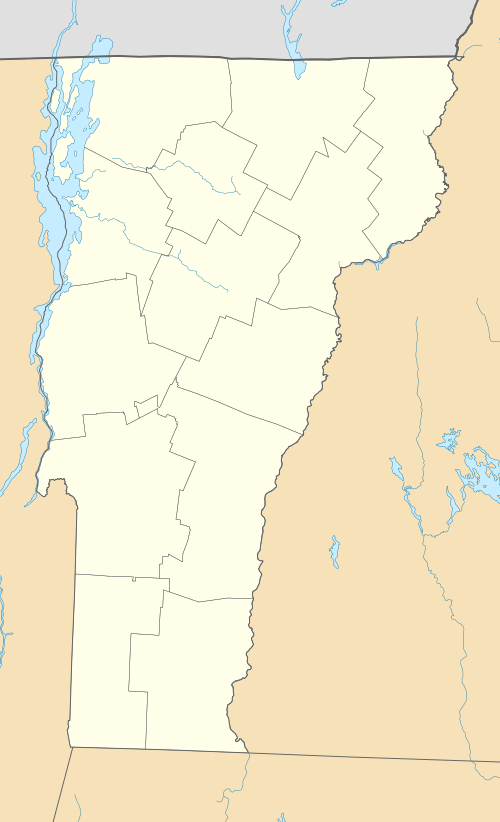Castleton Medical College Building
The Castleton Medical College Building, now known as the Old Chapel, is a historic building of the Castleton Medical College on Seminary Street in Castleton, Vermont, United States. Founded in 1818, it was the first medical college in Vermont,[2] and the first private degree-granting medical school in the United States. The chapel-like building was built in 1821, and is now the oldest building on the campus of Castleton University. Its current use is for special meetings and performances for Castleton University.[3] It was listed on the National Register of Historic Places in 1971.[1]
Castleton Medical College Building | |
 | |
  | |
| Location | Seminary St., Castleton, Vermont |
|---|---|
| Coordinates | 43°36′36″N 73°10′43″W |
| Area | 0.5 acres (0.20 ha) |
| Built | 1818 |
| Part of | Castleton Village Historic District (ID79000225) |
| NRHP reference No. | 71000058[1] |
| Significant dates | |
| Added to NRHP | March 11, 1971 |
| Designated CP | April 26, 1979 |
Description and history
The former Castleton Medical College Building stands on the Castleton University campus, between Seminary and Elm Streets. It is a two-story wooden structure, with timber framing enclosed by wooden clapboards, and a gabled roof. A projecting vestibule has a lower roof line than the main block, with a fully pedimented gable end, and the main entrance in a recess flanked by pilasters and topped by an entablature. At the front of the main roof a two-stage tower rises, square in the first stage, and with an open octagonal cupola above.[4]
Castleton Medical College was founded in 1818, and this building was constructed in 1821. It is believed to be the oldest surviving medical school building in the United States. It was moved a short distance (200 yards (180 m)) in the 20th century to make way for new construction on the CU campus.[4] It now houses classroom facilities for the university's art department.
Notable alumni of Castleton Medical College
- John Gould Stephenson, physician and soldier, Librarian of Congress
- Socrates Hotchkiss Tryon Sr., pioneer physician, philanthropist
- Robert M. Hunt, California physician
- Isaiah H. Hedge, physician, Baptist philanthropist at Bates College
- Samuel Denton, physician and politician in Michigan
References
- "National Register Information System". National Register of Historic Places. National Park Service. March 13, 2009.
- "The History of the First Medical College in Vermont—Castleton 1818-1862". Bull Med Libr Assoc. 38 (1): 68–69. PMC 195016.
- "Virtual Tour". Castleton University. Archived from the original on April 24, 2017. Retrieved April 30, 2017.
- "NRHP nomination for Castleton Medical College Building". National Park Service. Retrieved 2016-03-11.